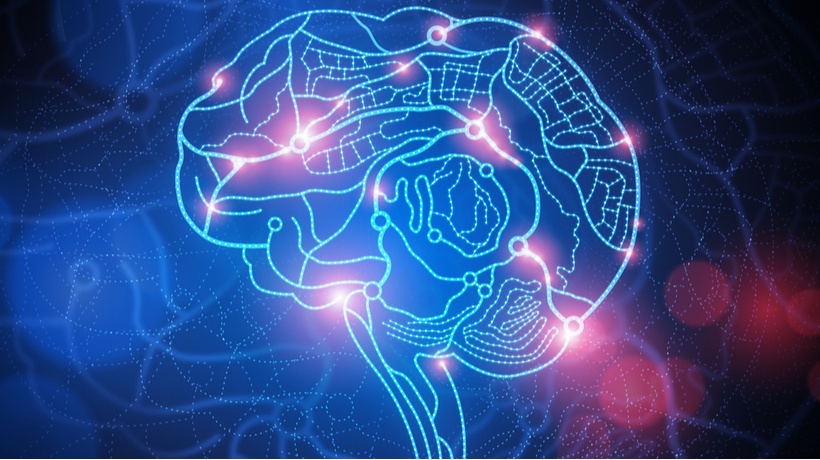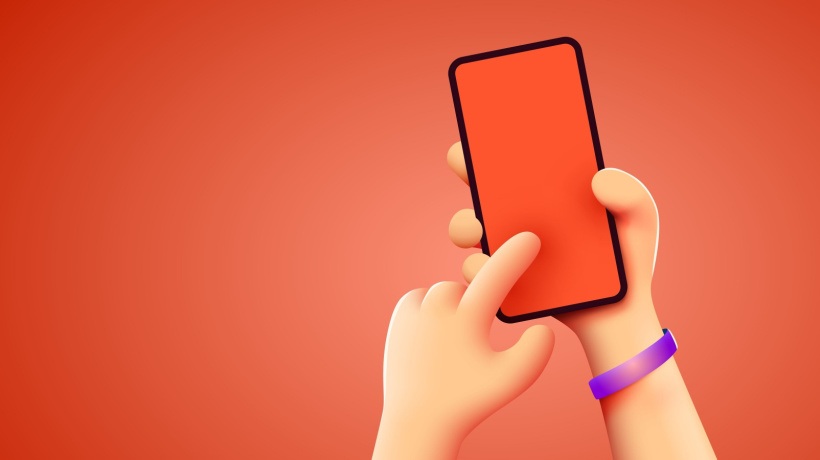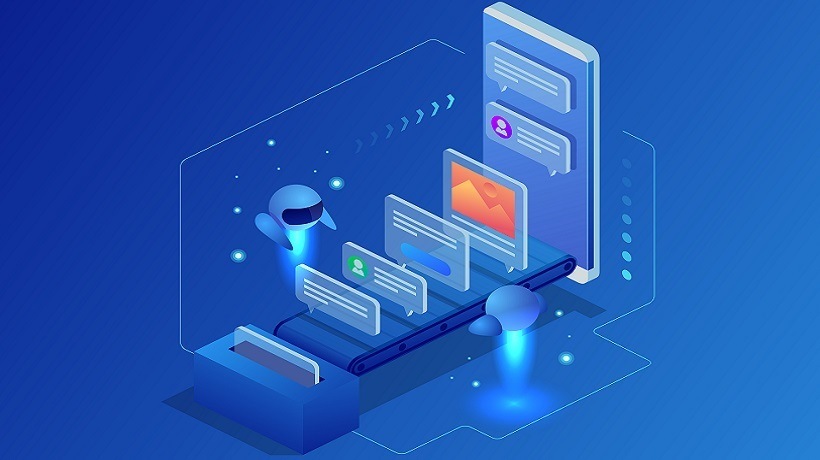What We Are Gaining And What We Can Lose
Contact with apps is increasingly common for all types of people of all ages. There are apps for almost everything, and there is no place or limit to access them; it can be waiting for an appointment or transportation, at lunch and dinner, as soon as you wake up, before bed, in the middle of a meeting or in the classroom.
This issue has worried many parents and educators, after all, it is not only young people and adults who have embarked on these waves but children from an early age. Everywhere we find little ones, many under the age of two, not even literate, eager to put their hands, eyes, and brains in contact with these devices.
Is there any damage to development hidden in this interaction with apps? What effects can this intense and increasingly prolonged contact have on our cognitive capacity, in the way we think, on our behavior and personality? Could, for example, this be the cause of anxiety disorders, impatience, and stress? Make our understanding shallower or deeper? Could it speed up or slow down Learning and Development? Many questions are still looking for answers, but one thing we already know: our mental structures can be affected in one way or another.
Brain And Thinking
This is a thorny theme, full of nuances. But in a simplified way, we can say that thinking is the result of the structure and functioning of the brain, which is the center of the nervous system. In his studies in the last century, Jean Piaget establishes the relationship between the development of the brain and the evolution of thought. The evolution of thought is important because it allows us to advance in understanding the world and to solve the most complex problems. That is why his theories have been one of the most important foundations for pedagogy worldwide, ever since.
Many imagine the brain as a homogeneous structure composed of the brain mass that grows and develops in the first years of life and then stabilizes immutably. The perception of common sense, that we are the same person throughout our lives, reinforces this idea. But the reality is quite different, the brain is not homogeneous; on the contrary, it is composed of several substructures that specialize in functions. Neuroscience research in recent decades has also found that it is in a permanent process of adapting to our needs, even after it apparently acquired its final shape. There is no doubt that it is the most versatile organ of all!
Life experiences, especially those that are repeated, end up promoting changes in the structures and functioning of the brain. Memorization is a good example of this phenomenon. At a given moment, we fix a new element in our memory and it remains there for a long time at our disposal, sometimes definitively. Learning implies, to some degree, a memorization process. Each learning is, therefore, a change in the state of the brain, its structure and functioning. In this way, the brain follows its development journey in order to provide us with the knowledge, skills, and competences that we need to face the concrete life we live and survive. Unless there is a malformation or dysfunction, as interactions with the world alter a structure and the functioning of the brain and it is not different in the case of interactions with apps and with other artifacts of any nature.
Neuroscience investigations have also revealed that, in a sense, brain structures and functioning are supportive: a structure provided can help or replace another that is having difficulty performing its function. In extreme cases, it can even grow or shrink as needed. This is what happens, for example, when a person stops talking after an accident or a stroke. It is possible that sometime later he will recover his speech, in whole or in part, by the assistance recommended by brain structures that were not affected. This is because speech exercises “force” the brain to perceive this need and adapt to it, making an unreached region take over the task. This ability of a brain structure to take on different functions "on demand" is called plasticity by neuroscientists.
But an accident is not necessary for certain structures to be "forced" to work harder (or even), to grow (or decrease), and to "help" (or obtain "help") in carrying out "tasks." The structures involved in sound processing will be more required and will have more activity in the brain of musicians, with more connections between neurons and more synapses, which are the electrical signals exchanged between neurons when the brain is working. In a painter's brain, on the other hand, other structures will be more active and developed, such as those dealing with color recognition.
At this point, it must be clear that all learning results in changes in the brain and that each type of activity that we perform (whether learning or not) induces a brain structure and functioning. It follows that, even though we have a biological basis in common when developing the design of our brains, it is immensely diverse because it corresponds, in each of us, to the accumulation of our personal experiences in the environment in which we live.
The Case Of Waze, An Example Available To All
It doesn't seem like it, but all of these phenomena are at work when we use an app on a smartphone, tablet, or computer. Let's consider Waze, nowadays so popular, to understand how it happens. Waze is used to get real-time guidance on the best route to travel between two points. It can be from one city to another, or within the same city, it doesn't matter. Waze makes directions based on your maps, the information sent by your smartphone (such as your location, for example) and the information you get from other users, those who travel near the route you intend to take. In general, everything works well, just tell Waze where you want to go and that's it, from there you just follow the directions: “In two hundred meters turn right; turn right! Accident ahead reported!” and so on. Waze facilitates our spatial navigation on the complex road network amid heavy traffic! That's why we like it so much and sometimes, even knowing the way we usually use it, which for many makes its use systematic and intense.
What did we do before Waze existed? If you are not from a generation that was born with Waze, you will certainly remember. There were basically two situations: when a path was known or when it was not. In the first case, we mentally reproduced what should be done. Somehow our brain "drew" the path in advance, using the references it knew were in our memories. We created mental images; we planned what should be done, which somehow meant that we "visualized" the path internally. Before the next street, our brain was already prepared to make us turn right after that climb, we knew that there would be a fork in the road and that we should follow the left and thus leading us street by street, turn by turn, reference by reference to the destination.
This process mobilized many skills and competences, but the use of spatial and kinesthetic skills was more intense, using Howard Gardner's theory of multiple intelligences as a reference. The first helps us to design spaces and position ourselves in it, while the second allows us to coordinate our movements in that space. All of our references for assembling these images were stored in our long-term memory.
In the second case, when we did not know the way and therefore did not have enough references in memory, it remained to ask or consult a printed city guide full of maps. The printed guide replaced the memory. When a map is used, we mobilize our linguistic and mathematical intelligences but the contribution of the spatial and kinesthetic intelligences remains very strong, although in a partially different way from when the reference came exclusively from memory. In this case, it was necessary to perform correlations between the map and the real path, transpositions, which implies the ability to read the two-dimensional representations of the city maps, knowing how to correctly align their orientation with the point of the city where we are (where is the north, south, east and west, right and left, etc.). This often required rotating the map to align with our references. All the work was more difficult than when we used only memory and it was often necessary to stop and reevaluate the map and the path. For some, all this was so painful that they preferred to simply ask, stopping now and then to reorient themselves. As it should be clear, something as simple as getting from place to place is a complex mental operation.
Well, but how does Waze change this scenario? Waze facilitates our spatial navigation, a function performed by the hippocampus, a small structure of the brain, reducing practically everything following your oral instructions: knowing what is left and right is almost everything you will need. As a result, the more we use Waze to get from place to place the less we use the hippocampus. And what happens then?
Nicholas Carr in his anthological work, The Superficial Generation: What the Internet Is Doing With Our Brains (Editora Agir, 2010), describes a survey of taxi drivers in London in the late 1990s. He says,
[.. .] a group of British researchers scanned the brains of taxi drivers who had between two and forty years of experience behind the wheel. When they compared the results with those of a control group [non-taxi drivers], they found that the back of the taxi drivers' hippocampus, a part of the brain that plays a key role in storing and manipulating spatial representations around a person, was very higher than normal. Furthermore, the longer the taxi driver worked, the greater his posterior hippocampus tended to be. The researchers also found that the front part of the taxi drivers' hippocampus was smaller than the average, which seemed a consequence of the need to accommodate the enlargement of the rear zone. Later evidence indicated that the decrease in the previous hippocampus could have reduced the capacity of taxi drivers for other tasks of memorization.
We have reached a point where it is already possible to understand why the continued and systematic use of Waze is little by little signaling to the brain that certain structures are no longer as necessary (in this case, the hippocampus). If London taxi drivers have further developed the hippocampus of their brains due to the high demand for mentally tracing routes in their professional routines, perhaps with the time of systematic and intense use it will become more difficult for Waze users to trace paths mentally, if less development really occurs of this brain structure due to low demand. In this case, other activities related to space navigation may be compromised, not just tracing paths.
It is important to consider that the hippocampus is not stimulated only when we trace paths through the city and that changes in the way of doing this activity (now with the help of Waze) may not be enough to generate changes in the vast majority of people. There needs to be a specific investigation to determine the precise contours of this phenomenon in this case. It should also be clear that we are not in any way meaning to: Delete your apps! Abandon the screens! Burn the machines! It would be impossible to give up the facilities that we have today with all that the scientific and technological revolution has brought us, including Waze (this marvel!) and other apps.
Waze specifically is a true revolution in the way of tracing paths—an activity that has accompanied humanity since its inception, and it is likely that it may surprise us even more as it returns in service the huge mass of data it stores! Maybe help us to better plan the development of the road network and transport systems! Also on the cognitive level it can help us to develop new spatial perceptions, who knows, in addition to many other insights about space, time, displacements, etc.? We don't propose, we can't, and we don't want to go back! But it is necessary to be aware of what is at stake behind these advances and certain changes in social habits and practices that are spreading in our lives so that it is possible to make the best use of them. The most profound fact is that if we change the way of doing, then we change the way of being.
Some Consequences For Educational Processes
Like Waze, here taken as an example, other apps with games, educational objects, social networks, search engines, in short, all these resources that are now available to most of us can potentiate certain changes in our brain structure and functioning. It all depends on how frequent and intense this use is, in addition, obviously, on the complexity of what is managed. These changes are gradually shaping ways of thinking, generating mental schemes that together characterize our cognitive and socio-emotional capacity. We can become adept at recognizing patterns and little skilled at spatial location, for example, or vice versa. It is this unfolding, this kind of side effect of the systematic and intense use of certain software, that we need to be aware of and investigate. We can imagine the day when the description of an application may contain information about the cognitive benefits it brings as well as a legal warning, such as: "This app can be harmful to your hippocampus. Use it sparingly!"
For some generations, systematic and intense contact with digital systems (software) has been the rule. This relationship will be more and more profound and, why not say, symbiotic. The new habits directly affect our development and way of thinking. Our brain does not rest and is always adjusting to our experiences and needs—at the same time it mirrors what we are and what we allow it to be. This very real scenario suggests that there is a specific concern with this theme in school education. That is why it is necessary to expand knowledge about these phenomena so that it is possible to design activities that can make better use of the impulses that are generated and compensate for any losses that are created, seeking that human development is full, balanced and that reaches the maximum potential of each one. Dealing with this in education is, in current terms, a new and exciting challenge!








